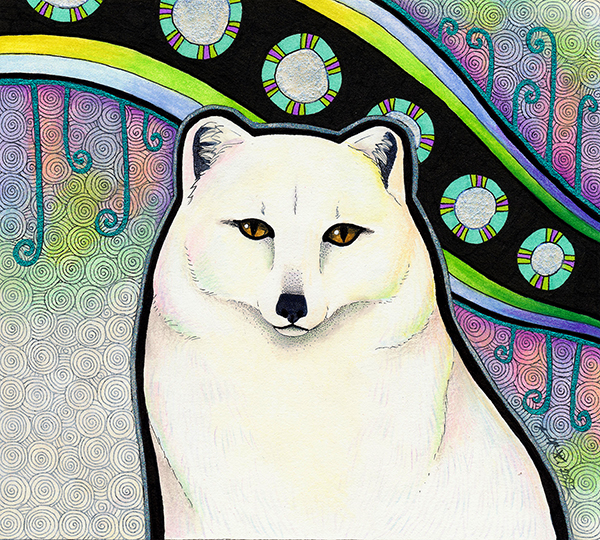Arctic Fox – What Have You Lost?
Keywords: Give yourself mercy. Grief. What have you lost? Where is the grace in your life? The odds are stacked against you. Everything at once, or nothing at all. Put yourself first. When all is well, put energy in reserve for when it isn’t. Starkness. Connection to the Arctic. Snow magic. Ice magic. Abundance and scarcity cycles. The importance of home and shelter.
Description: The Arctic fox (Vulpes lagopus) is a small fox found in the Arctic regions of the Northern Hemisphere. It is adapted to live in cold environments, with a thick coat with two distinct seasonal patterns that assist with camouflage depending on the time of year (there is a blue morph coat colour that persists all year round, but it is only found in about 1% of Arctic foxes) and a large, fluffy tail and rounded body. The Arctic fox coat provides the most insulation of any mammal. Arctic foxes further protect themselves against the cold by spending time in their dens, building fat reserves before winter, and reducing their activity, though they do not hibernate.
Arctic foxes primarily eat lemmings, voles, seal pups, fish, birds, carrion, insects, berries, and seaweed. In times of desperation, they will eat their own feces. In some locations, their population fluctuates with the ability of lemmings. Arctic foxes form primarily monogamous pairs while breeding and raise their young together in complex dens that may have been used for many generations, with many entrances. They can sometimes form complex social relationships, and sometimes groups will guard a territory.
Arctic fox enemies include eagles, wolves, polar bears, wolverines, red foxes, and grizzly bears. While the Arctic fox is overall secure in population, there are individual populations that are Endangered or Vulnerable. They are threatened by hunting (primarily for fur), loss of habitat to the red fox, climate change and disease. In the wild, most Arctic foxes do not survive past their first year.
Was this helpful?
0 / 0